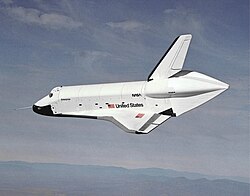User talk:Redacted II

Please stick to the first half of the Hierarchy of Disagreement. See WP:PA for additional information.
The Downlink Volume 3, Issue 9
[edit]
|
The Downlink | The WikiProject Spaceflight Newsletter |
|---|---|---|
| 2025 1 — 30 September |
| Volume 3 — Issue 9 | ||||||||||||||||||||||||||||||||||||||||||||||||||||||||||||||||||||||||||||||||||||||||||||||||||||||||||||||||||||||||||||||||||||||||||||||||||||||||||||||||||||||||||||||||||||||||||||||||||||||||
|---|---|---|---|---|---|---|---|---|---|---|---|---|---|---|---|---|---|---|---|---|---|---|---|---|---|---|---|---|---|---|---|---|---|---|---|---|---|---|---|---|---|---|---|---|---|---|---|---|---|---|---|---|---|---|---|---|---|---|---|---|---|---|---|---|---|---|---|---|---|---|---|---|---|---|---|---|---|---|---|---|---|---|---|---|---|---|---|---|---|---|---|---|---|---|---|---|---|---|---|---|---|---|---|---|---|---|---|---|---|---|---|---|---|---|---|---|---|---|---|---|---|---|---|---|---|---|---|---|---|---|---|---|---|---|---|---|---|---|---|---|---|---|---|---|---|---|---|---|---|---|---|---|---|---|---|---|---|---|---|---|---|---|---|---|---|---|---|---|---|---|---|---|---|---|---|---|---|---|---|---|---|---|---|---|---|---|---|---|---|---|---|---|---|---|---|---|---|---|---|---|
| Spaceflight Project • Project discussion • Members • Assessment • Open tasks • Popular pages • The Downlink | ||||||||||||||||||||||||||||||||||||||||||||||||||||||||||||||||||||||||||||||||||||||||||||||||||||||||||||||||||||||||||||||||||||||||||||||||||||||||||||||||||||||||||||||||||||||||||||||||||||||||
In the News
| ||||||||||||||||||||||||||||||||||||||||||||||||||||||||||||||||||||||||||||||||||||||||||||||||||||||||||||||||||||||||||||||||||||||||||||||||||||||||||||||||||||||||||||||||||||||||||||||||||||||||
| Article of the month
Project POSTAR was the first space experiment created entirely by members of the Boy Scouts of America. On September 12, 1992, Space Shuttle Endeavour mission STS-47 carried 10 Get Away Special (GAS) canisters. Amongst these GAS cansisters was G-102 sponsored by the Boy Scouts of America's Exploring Division in cooperation with the TRW Systems Integration Group, Fairfax, Virginia. The project was named Project POSTAR. (The name was a combination of the words "Post" and "Star"). |
Image of the month
Space Shuttle Enterprise
 The Space Shuttle Enterprise (OV-101) was the first orbiter built in the Space Shuttle program. Designed for atmospheric test flights, it lacked both engines and a heat shield, making it unable to go to space. Rolled out on 17 September 1976, it was initially named Constitution, but was renamed following a large letter-writing campaign from Trekkies. Unlike its eponym, the USS Enterprise from the original Star Trek series, OV-101 never achieved spaceflight; originally intended to be refitted to become the second space-rated orbiter after Columbia, changes to the design of the Space Shuttle made it both simpler and cheaper to instead construct a new shuttle, Challenger, around a test article. It was later considered for refitting following the Challenger disaster, but it was instead decided to build a replacement, Endeavour, out of spare parts from the construction of Discovery and Atlantis. Enterprise flew a total of five times, from 12 August to 26 October, 1977. It was then flown to Marshall Space Flight Center in Alabama, where it was placed into the Saturn V dynamic test stand for the Mated Vertical Ground Vibration Testing, in order to test the Space Shuttle's launch stack. It was then used for a variety of fit checks at Kennedy Space Center and Vandenberg Air Force Base, between which it toured Europe and North America, including a showing at the 1984 Louisiana World Exposition. It was then moved to the Smithsonian Institution's National Air and Space Museum on 18 November 1985. It was then moved to its present location aboard the USS Intrepid museum ship on 12 December 2011. | |||||||||||||||||||||||||||||||||||||||||||||||||||||||||||||||||||||||||||||||||||||||||||||||||||||||||||||||||||||||||||||||||||||||||||||||||||||||||||||||||||||||||||||||||||||||||||||||||||||||
| Members
New Members:
Number of active members: 214.
Total number of members: 440.
September Launches
|
Article Statistics This data reflects values from 30 September 2025.
Monthly Changes
Since August 2025, there are seven fewer high-importance, seven more mid-importance, 28 more low-importance, three more NA-importance, and twelve more unknown-importance articles, for a total of 43 more articles. There is also one more GA-class article, 11 fewer B-class articles, 28 fewer C-class articles, 65 more Start-class articles, 42 fewer Stub-class articles, and two more lists. | |||||||||||||||||||||||||||||||||||||||||||||||||||||||||||||||||||||||||||||||||||||||||||||||||||||||||||||||||||||||||||||||||||||||||||||||||||||||||||||||||||||||||||||||||||||||||||||||||||||||
|
Discuss & propose changes to The Downlink at The Downlink talk page. To unsubscribe from the newsletter remove your name from the Mailing list. | ||||||||||||||||||||||||||||||||||||||||||||||||||||||||||||||||||||||||||||||||||||||||||||||||||||||||||||||||||||||||||||||||||||||||||||||||||||||||||||||||||||||||||||||||||||||||||||||||||||||||
MediaWiki message delivery (talk) 07:11, 19 October 2025 (UTC)